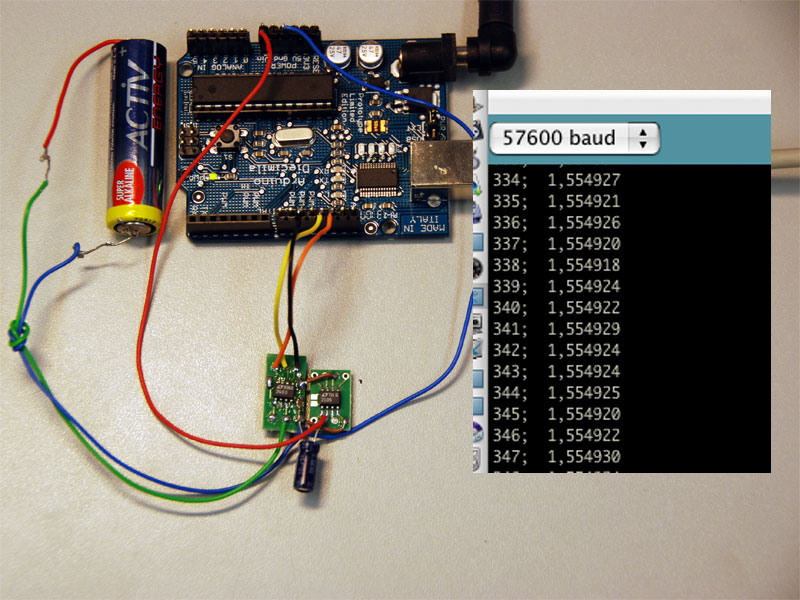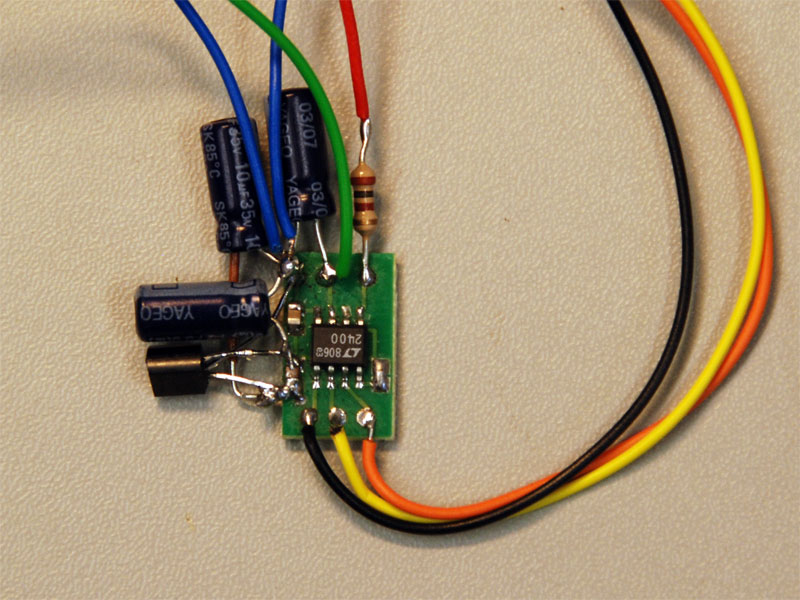Tired Of A 10 Bit Res? Hook Up A Better Analog-To-Digital ConverterTired Of A 10 Bit Res? Hook Up A Better Analog-To-Digital ConverterTired Of A 10 Bit Res? Hook Up A Better Analog-To-Digital Converter

[Martin Nawrath] from Lab3, Cologne, made a nice ADC tutorial based on the 18bit LTC2400:
If the resolution of the Arduino is not enough for your application you have to try it with a better ADC. The LTC2400 gives you a resolution of up to 24 bit at a datarate of 5 samples per seconds and is quite simple to connect. With this device you can connect sensors which have only a low output level like thermo couples or force strain gauges. The high sensitivity can make the use of of an preamp needless.

[Martin Nawrath] from Lab3, Cologne, made a nice ADC tutorial based on the 18bit LTC2400:
If the resolution of the Arduino is not enough for your application you have to try it with a better ADC. The LTC2400 gives you a resolution of up to 24 bit at a datarate of 5 samples per seconds and is quite simple to connect. With this device you can connect sensors which have only a low output level like thermo couples or force strain gauges. The high sensitivity can make the use of of an preamp needless.

[Martin Nawrath] from Lab3, Cologne, made a nice ADC tutorial based on the 18bit LTC2400:
If the resolution of the Arduino is not enough for your application you have to try it with a better ADC. The LTC2400 gives you a resolution of up to 24 bit at a datarate of 5 samples per seconds and is quite simple to connect. With this device you can connect sensors which have only a low output level like thermo couples or force strain gauges. The high sensitivity can make the use of of an preamp needless.

Since the LTC2400 comes in an SO8 package the circuit was breadboarded on a SMD prototype board which is available at your electronic shop.
The to communicate with the LTC2400 the Software makes use of the ATMEGA168 hardware SPI. To print a float type number the “printFloat” procedure found in the Arduino Playground was used.
more (Code + Schematics) on [Lab3]

Since the LTC2400 comes in an SO8 package the circuit was breadboarded on a SMD prototype board which is available at your electronic shop.
The to communicate with the LTC2400 the Software makes use of the ATMEGA168 hardware SPI. To print a float type number the “printFloat” procedure found in the Arduino Playground was used.
more (Code + Schematics) on [Lab3]

Since the LTC2400 comes in an SO8 package the circuit was breadboarded on a SMD prototype board which is available at your electronic shop.
The to communicate with the LTC2400 the Software makes use of the ATMEGA168 hardware SPI. To print a float type number the “printFloat” procedure found in the Arduino Playground was used.
more (Code + Schematics) on [Lab3]









